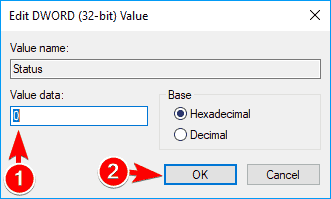How to stop websites from asking your location in Chrome? While surfing online, you may noticed that some websites ask for permission to access your location. If you’re concerned about websites tracking your physical location, you can configure your web browser (Chrome, Edge, Firefox, Internet Explorer) to disable websites asking for your location in Windows 10.

Part 1: Turn Off Location Tracking in Google Chrome

- Click on the three-dot menu on the right-hand side of the address bar, go to Settings.
- Scroll till the end and click on Show advanced settings.
- Click on Content settings and under the Privacy section.
- Scroll down to the Location section and select “Do not allow any site to track your physical location“. Now click Done
Part 2: Turn Off Location Tracking in Microsoft Edge
1.) Open the program file location over the Windows-10 search! Via Search Symbol or Windows-Logo + Q keyboard shortcut start the Windows 10 search. Enter in the Search Box for example the text word and do a right click on WordPad, and open the File Location! Your Location Is Currently in Use in Windows 10 FIX TutorialThe Location Tracking service in Windows 10, will tell the apps where your location is and you. Your Location Is Currently in Use in Windows 10 Posted by: Timothy Tibbetts on 08:37 AM Comments « Random Photo: Goose is Not Excited Your Location Is Currently in Use in Windows 10 Windows 10 Photos App Opens Slowly or Not at All ». Symptom: Windows 10 Your Location Is Currently in Use Windows 10 offers you the Location service that can tell applications on your computer where your physical location is. And you will see a round icon when any app accesses the location service to identify your location.
Just like other Windows 10 Store apps, Microsoft Edge’s location tracking settings cannot be controlled from within the browser itself. You have to turn off location tracking through the Settings app. Follow these steps:
- Open the Settings app and then click Privacy.
- Select Location tab in the left side. Scroll down to the “Choose apps that can use your precise location” section and turn the slider next to Microsoft Edge to Off.
Part 3: Turn Off Location Tracking in Firefox
- Open your Firefox browser. Type about:config into the address bar and press Enter.
- You’ll see a warning message “This might void your warranty!“. Just click I accept the risk and move on.
- Type geo.enabled into the Search box and hit Enter. The Geo Enabled option should show up. Double-click that option with your mouse to disable it.
Part 4: Turn Off Location Tracking in Internet Explorer
- Open your Internet Explorer. Click on the gear shaped Settings icon in the upper-right corner. From the drop-down menu, select Internet options.
- The Internet Options dialog box will open. Click on Privacy tab and check the box “Never allow websites to request your physical location“. Click OK and you’re done!
Related posts:
A bug in Windows 10 causes the operating system to crash with a Blue Screen of Death simply by opening a certain path in a browser's address bar or using other Windows commands.
Windows 10 Icon Your Location Is Currently In Use
Last week, BleepingComputer learned of two bugs disclosed on Twitter by a Windows security researcher that can be abused by attackers in various attacks.
The first bug allows an unprivileged user or program to enter a single command that causes an NTFS volume to become marked as corrupted. While chkdsk resolved this issue in many tests, one of our tests showed that the command caused corruption on a hard drive that prevented Windows from starting.
Today, we look at the second bug that causes Windows 10 to perform a BSOD crash by merely attempting to open an unusual path.
Opening this path causes a BSOD
Since October, Windows security researcher Jonas Lykkegaard has tweeted numerous times about a path that would immediately cause Windows 10 to crash and display a BSOD when entered into the Chrome address bar.
When developers want to interact with Windows devices directly, they can pass a Win32 device namespace path as an argument to various Windows programming functions. For example, this allows an application to interact directly with a physical disk without going through the file system.
Lykkegaard told BleepingComputer that he discovered the following Win32 device namespace path for the 'console multiplexer driver' that he believes is used for 'kernel / usermode ipc.' When opening the path in various ways, even from low-privileged users, it would cause Windows 10 to crash.

When connecting to this device, developers are expected to pass along the 'attach' extended attribute to communicate with the device properly.
Lykkegaard discovered if you try to connect to the path without passing the attribute due to improper error checking, it will cause an exception that causes a Blue Screen of Death (BSOD) crash in Windows 10.
Even worse, low privileged Windows users can attempt to connect to the device using this path, making it easy for any program executed on a computer to crash Windows 10.
In our tests, we have confirmed this bug to be present on Windows 10 version 1709 and later. BleepingComputer was unable to test it in earlier versions.
BleepingComputer reached out to Microsoft last week to learn if they knew of the bug already and if they would fix the bug.
“Microsoft has a customer commitment to investigate reported security issues and we will provide updates for impacted devices as soon as possible,” a Microsoft spokesperson told BleepingComputer.

Threat actors can abuse the bug
While it has not been determined if this bug could be exploited for remote code execution or elevation privilege, in its current form, it can be used as a denial of service attack on a computer.
Lykkegaard shared with BleepingComputer a Windows URL file (.url) with a setting pointing to .globalrootdevicecondrvkernelconnect. When the file is downloaded, Windows 10 would try to render the URL file's icon from the problematic path and automatically crash Windows 10.
BleepingComputer has since found numerous other ways to exploit this bug, including methods to cause BSODs automatically on Windows login.
In a real-life scenario, this bug could be abused by threat actors who have access to a network and want to cover their trail during an attack.
If they have admin credentials, they could remotely execute a command that accesses this path on all of the Windows 10 devices on a network to cause them to crash. The havoc caused on the network could delay investigations or prevent administrative controls from detecting an attack on a particular computer.

In 2017, a similar attack scenario was used by threat actors during a bank heist on the Far Eastern International Bank (FEIB) in Taiwan. In that attack, the threat actors deployed the Hermes ransomware on the network to delay investigations into the attack.
Your Location Is Currently In Use Windows
Related Articles:
